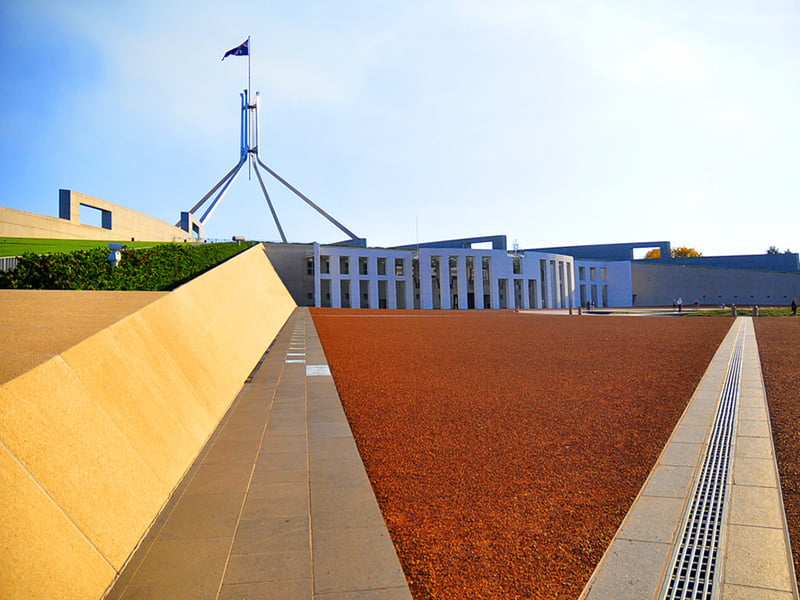The Industry department’s Business Research and Innovation Initiative has been on a slow burn since it was announced as part of the National Innovation and Science Agenda in December 2015.
The Challenge-based procurement reform aimed to use government procurement dollars to drive industry development outcomes. Specifically, the program sought to open government to innovative products and services from small to medium-sized businesses.

The BRII was designed to address two specific needs:
First, that government procurement was overly focused on risk minimisation, which limited opportunities to procure and foster innovative ideas and technologies.
And secondly, that Australian businesses lagged behind OECD peers in generating new-to-market innovations, hampers international competitiveness.
Industry minister Karen Andrews on Monday announced six local companies had been given $1 million each to carry out proof of concept projects on three government challenge areas. Among five challenge areas, government had sought smart fixes for better use of ‘intelligent data’ to improve tourism services; Algorithmic automation of complex determinations for Australian government information; and better control and management of hitch-hiking pests and contaminants arriving on shipping containers.
Two further challenges did not proceed past the feasibility study phase.
The BRII program has probably gone more under the radar than government might have liked. The BRII program was set up as a $12 million pilot and funded from the start of the 2016/17 financial year. Its original NISA funding would finished at this end of this financial year, but the government has seen enough promise to extend the program.
It is now been given $25.4 million over the four years of the forward estimates from the current financial year to 2022/23. The Industry department is expected to run a new round of five challenges every two years.
The pity of it is that the program was not just extended, but further expanded as well. A Nous Group evaluation of the round one challenges was generally positive about the impact of the program, and the opportunities it opened for SMEs and startups.
Certainly, the evaluation found enough positive return that the pilot was extended. The evaluation authors concede that some longer term outcomes will not be know for some years to come, particularly in relation to the further commercialisation of SME innovations.
It also notes that given the scale and complexity of the departments and agencies that conducted the challenge programs with Industry, the BRII impact on government was modest. While the challenge teams themselves reported the positive impact of SME engagement, the ability to be more flexible and to more rapidly drive out-of-the-box ideas into solutions, the reality was that this positive impact was restricted to only small parts of the wider organisation.
If BRII is to have broad impact as an industry development tool – as it is through similar programs in the US (through the SBIR, Small Business Innovation Research program) and the UK (through the Small Business Research Initiative).
The BRII won’t have a real impact on either its industry development goals for SMEs nor its innovation goals for government if it does not scale – and the $25.4 million in forward funding looks more like steady-as-she-goes funding for a pilot rather than an attempt to scale a potentially successful program.
The US SBIR program spends about US$2 billion annually on the program. US agencies are bound to spend a percentage of their procurement budget on the program, effectively ensuring that US small businesses get a mandated crack at the giant government procurement budget.
The Australian Government total procurement spend is about $49 billion, according to the 2018 Nous study. The BRII pilot spending was $12 million over four years. It is hard to see how this toe-in-water spending can have anything like a broad impact either on government procurement culture.
As an initiative of the National Innovation and Science Agenda, the BRII thinking had been floated by the Wyatt Roy initiated Policy Hack in 2015, based on the success of the US’ SBIR program. The SBIR has been a key feature of US industrial policy since the 1980s, to ensure that US procurement dollars find their way to innovative smaller companies doing clever things.
The BRII Pilot: Post-commencement Evaluation undertaken in 2018 showed that participating businesses are undertaking new R&D, commercialising intellectual property and developing new collaborations.
Government agencies participating in BRII valued the unique capabilities, speed, agility and open-mindedness SMEs bring to the program. They also benefit from SMEs’ partnering with other firms and research organisations to supplement their expertise where necessary.
The evaluation found “the pilot is well designed and implemented. Some outcomes are already being realised, particularly for small to medium enterprises that have progressed to the second stage of proof of concept funding. Staff working in challenge agencies are highly positive about the process and potential outcomes.”
The Business Research and Innovation Initiative should be expanded, not just extended.
Do you know more? Contact James Riley via Email.

